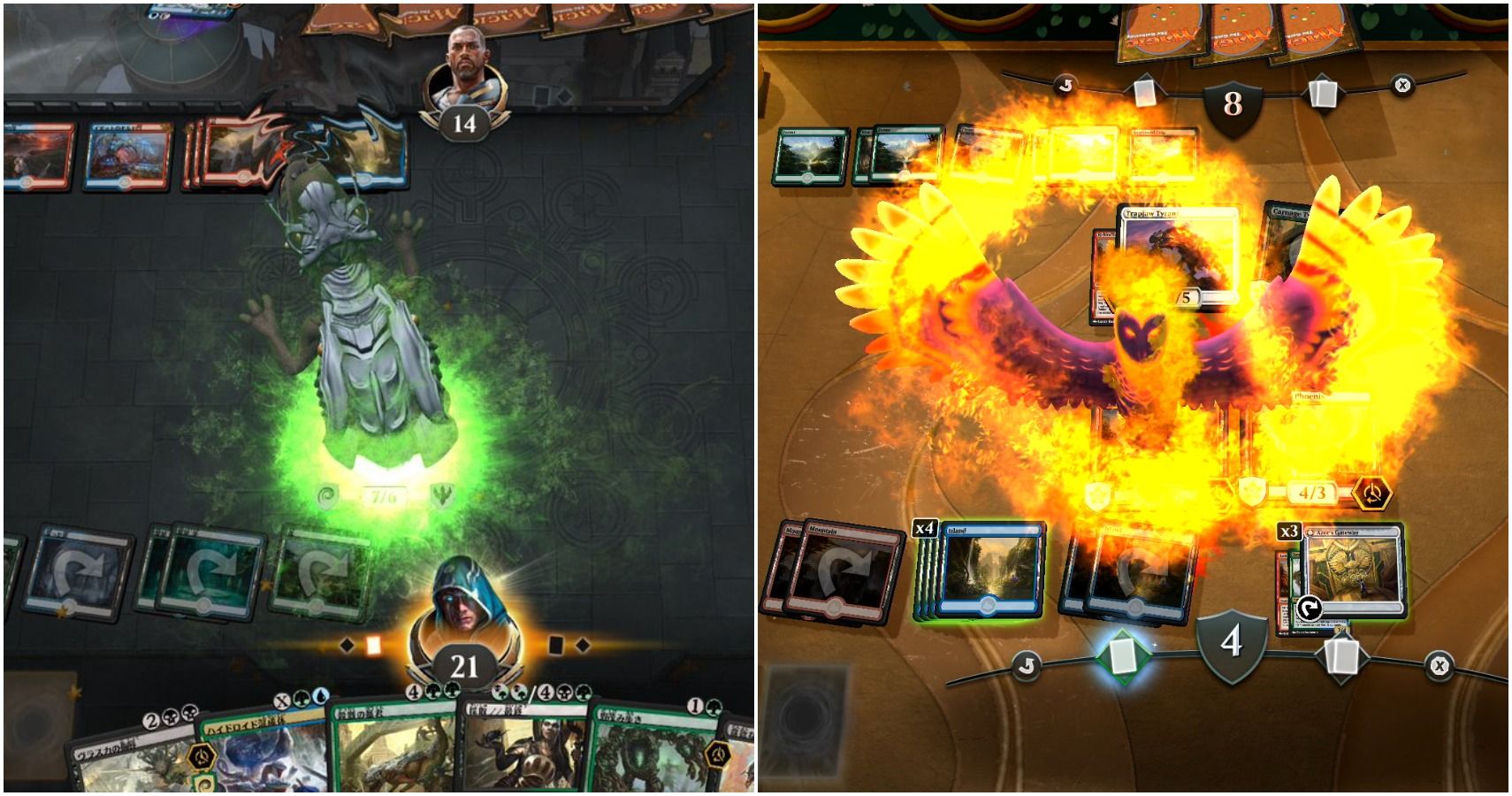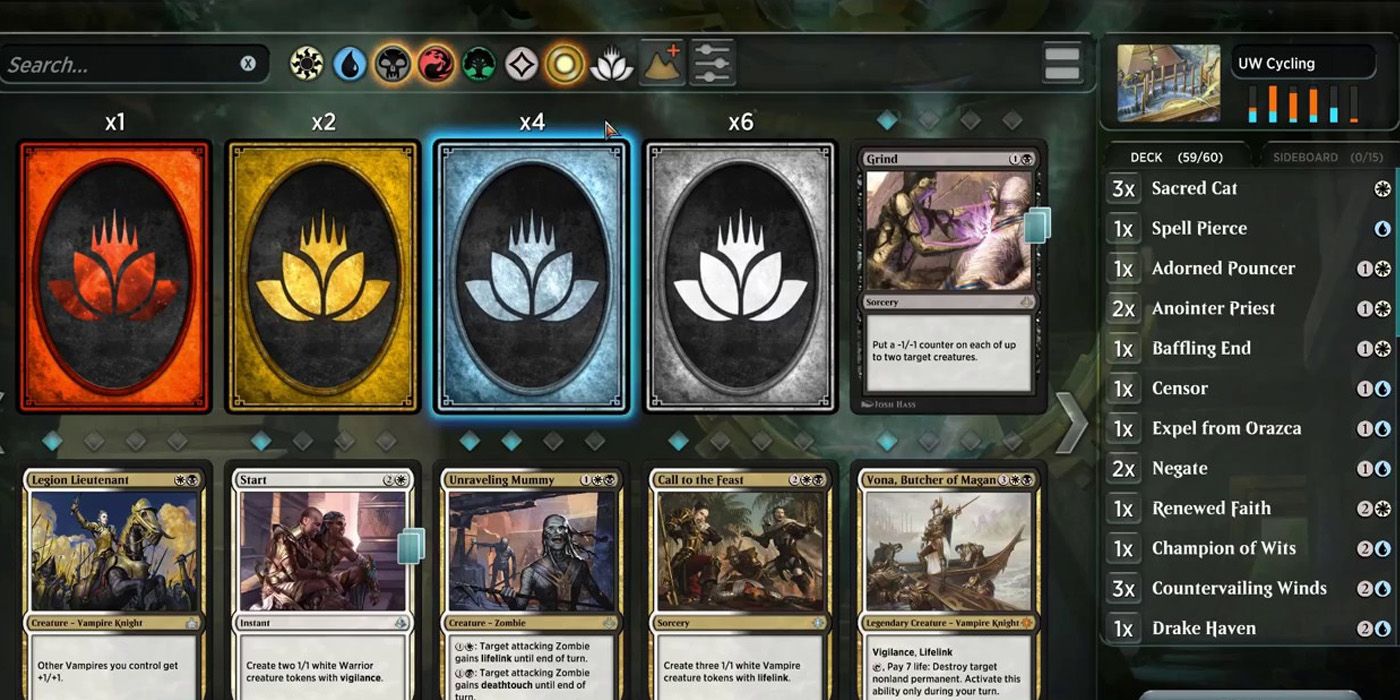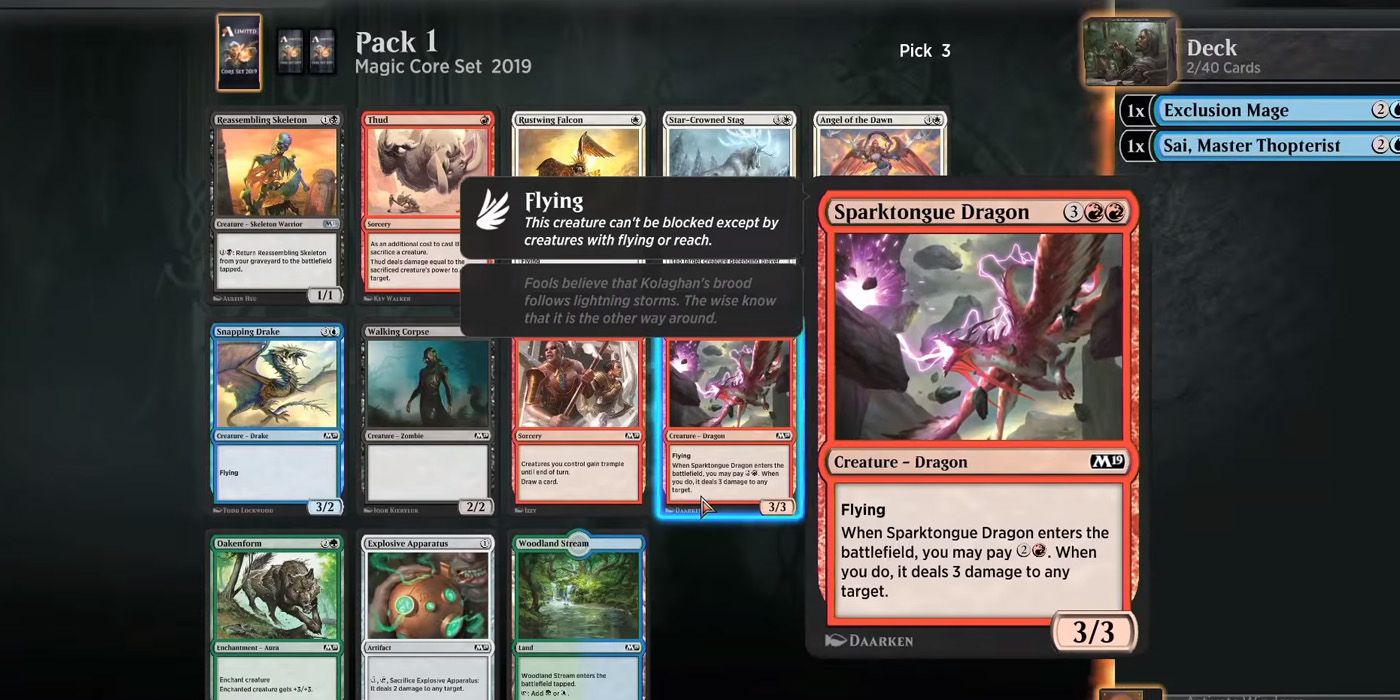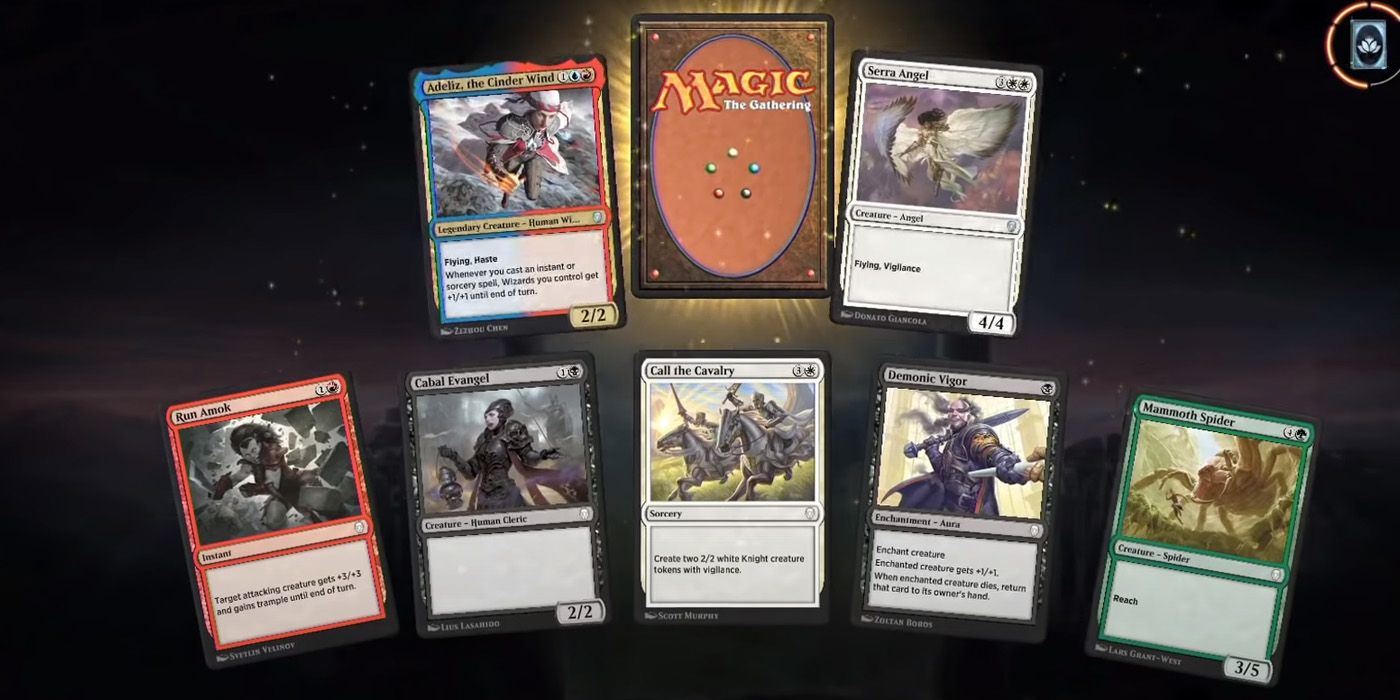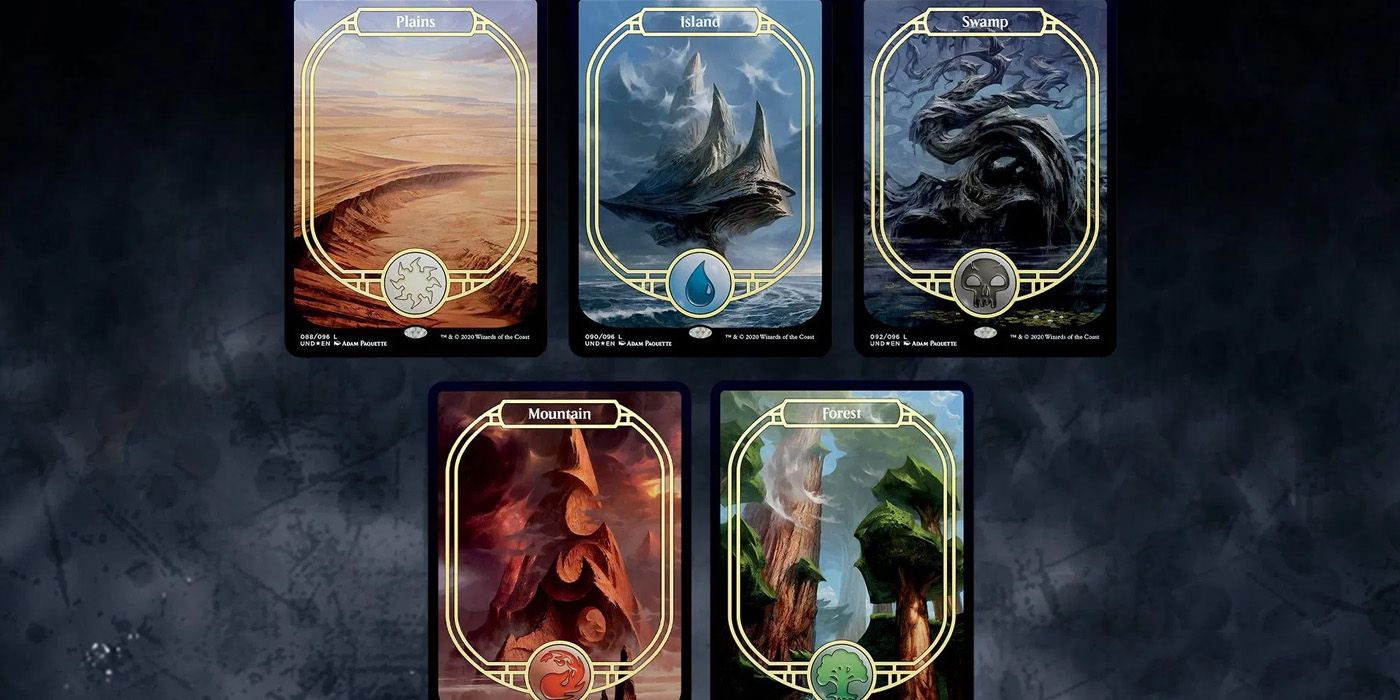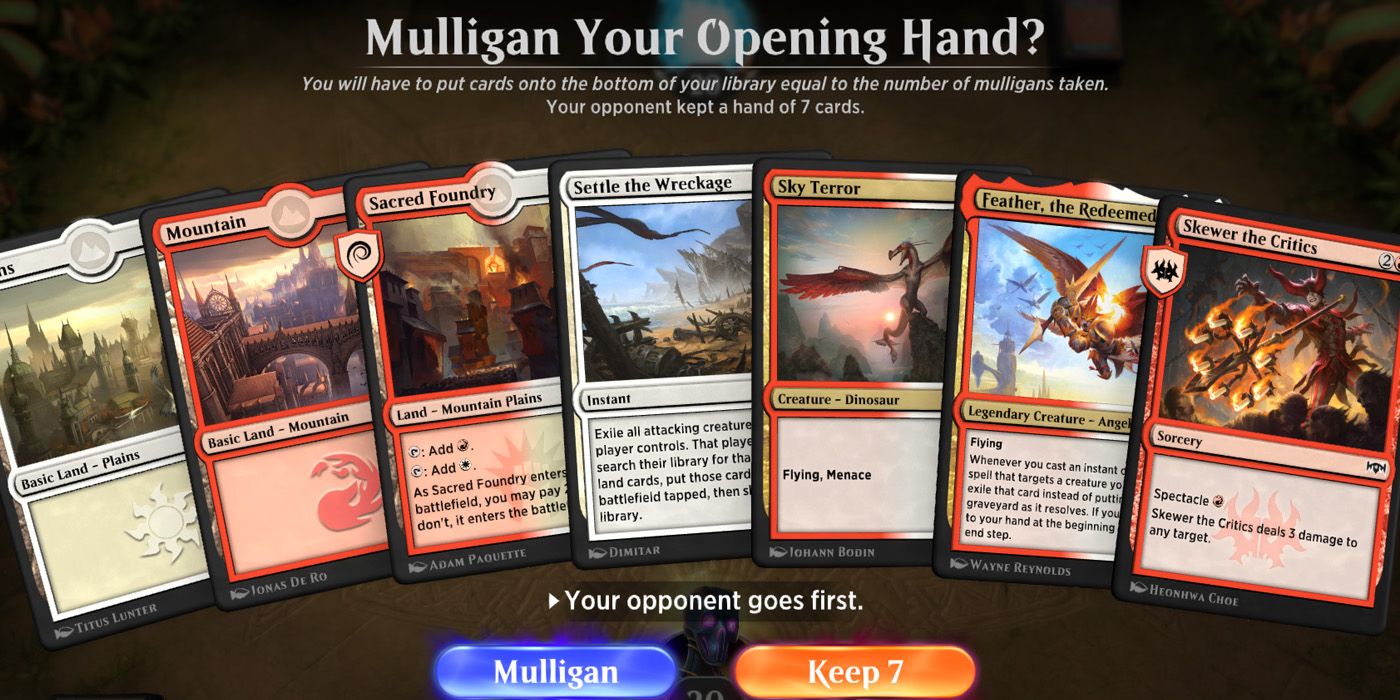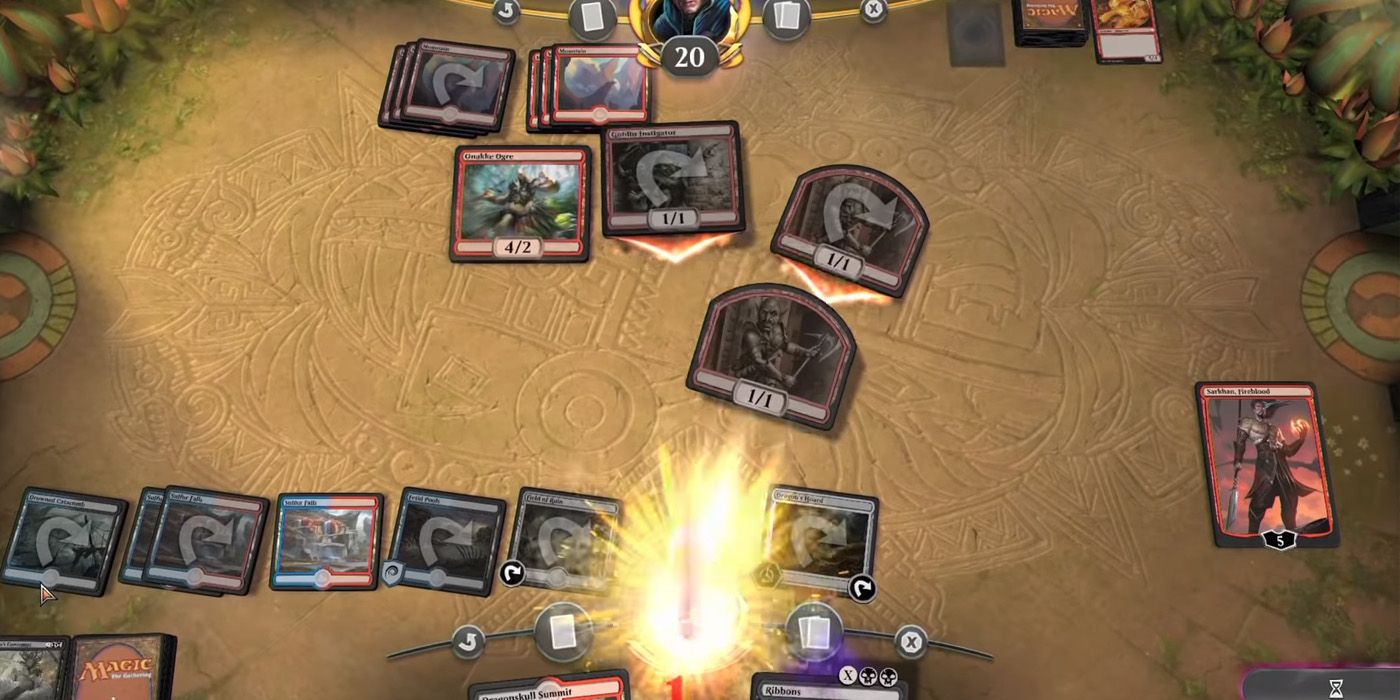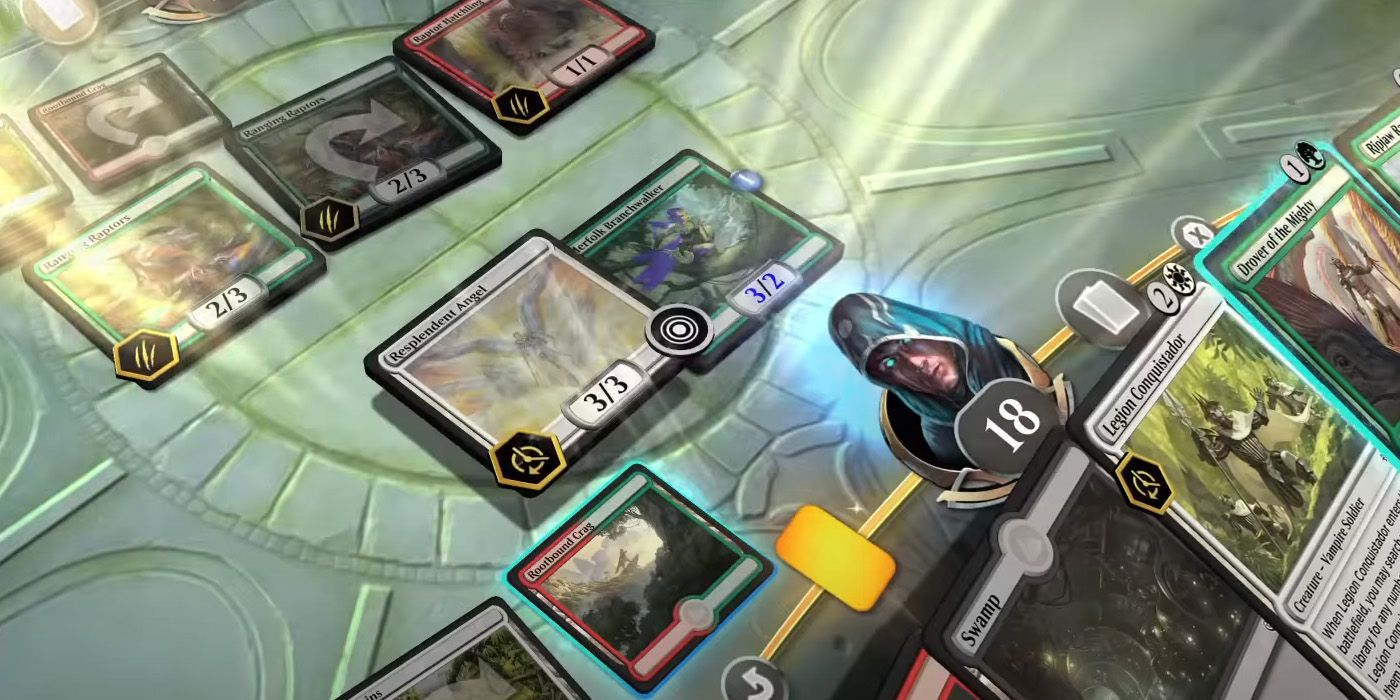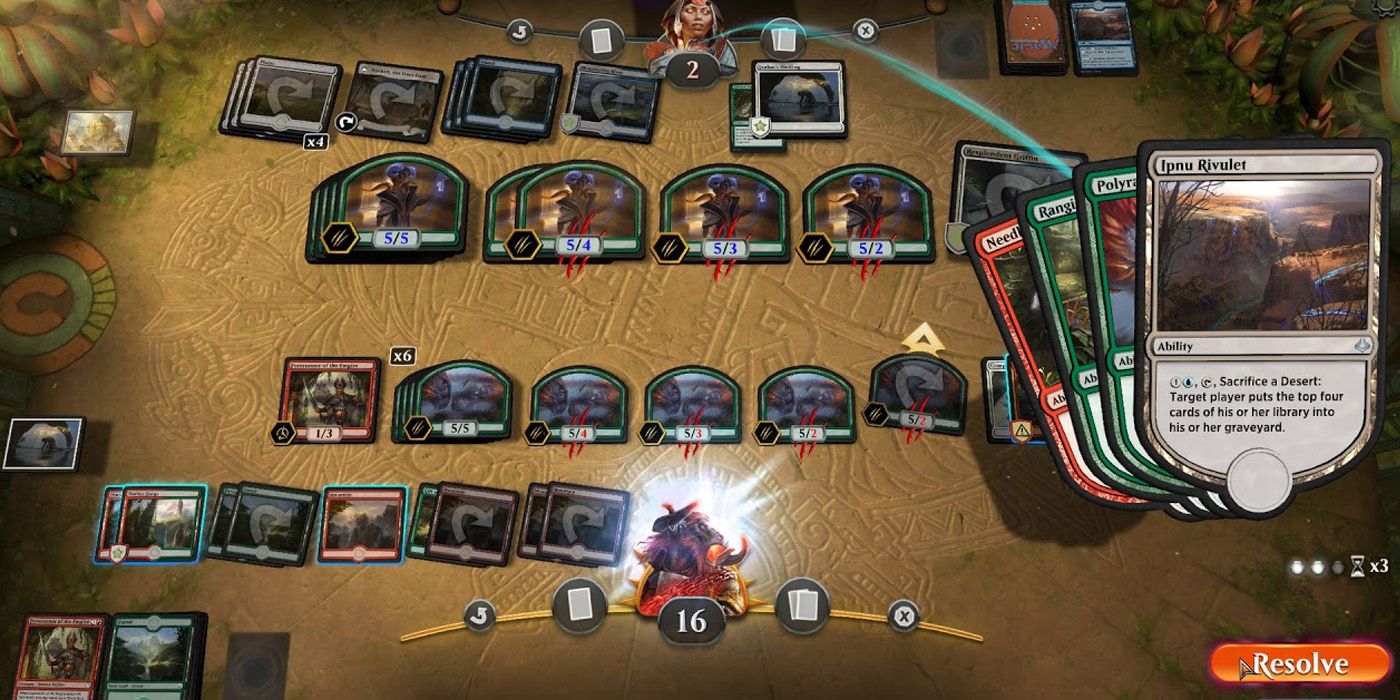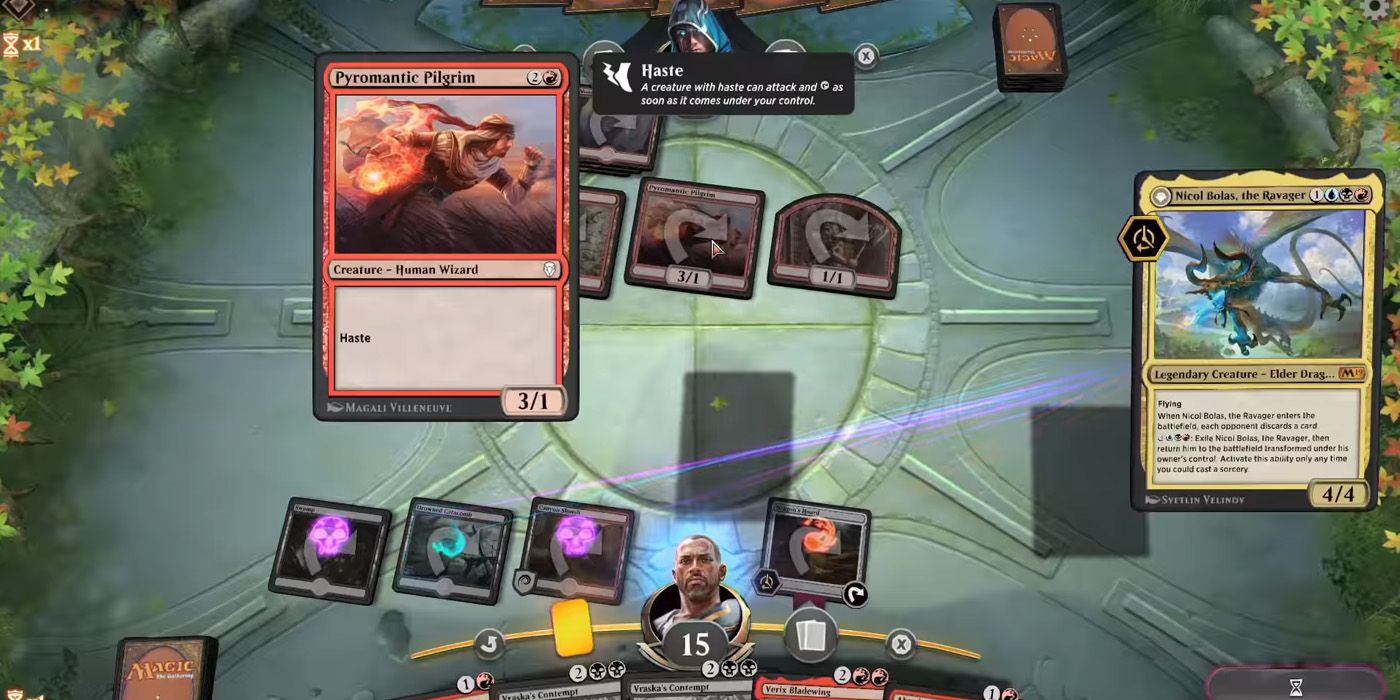Trading card gamers and fans consider Wizards of the Coast's Magic: The Gathering as one of the most popular and complex card games to have graced the gaming scene. And thanks to Magic Arena, trading card game (TCG) fans and newcomers can get into MTG without having to buy expensive cards and decks. Moreover, this means more people can start getting into the rich world of Planeswalkers and the exciting competitive MTG scene.
However, fans and enthusiasts interested in MTG might soon realize there's more to the meta than what the straightforward nature of the game seems to show. And thankfully, for a game that's been with its player since 1993, players have gathered quite a ton of tips to get any newbie ready for the pro scene.
10 Stay Consistent With The Theme
While MTG encourages card collection, competitive players should remember that certain cards work best with others. Aside from having colors, cards work together to trigger special combos. As such, players should consider building decks that follow their preferred strategy.
For instance, traditional players opt for combat-oriented decks. However, some of them spice things up with strong cards, relying on smaller creatures, or even enchantments. Other players use cards that delay damage and forces opponents to discard cards (milling), and others rely on poison counters.
9 Study Popular Decks
Both standard and modern tournaments regularly change deck preferences based on packs released in the game. While it's true that players should develop their own decks, it's helpful to learn which cards and decks become popular based on the meta. This allows players to identify certain combos based on lands and mana amount or creature presence in cards.
Actively studying new decks and cards may also help players build better secret combos on their decks. Moreover, new cards and combos may even counter the current combos they have.
8 Pay Attention To The Mana Curve
Players should pay attention to how much mana their cards cost, which is called making a mana curve. Moreover, newbies building their decks should pay attention to the mana curve, as great cards that cost a lot take longer to cast. For instance, aggro decks have cheaper cards. These cards most likely come in the form of 1-drop or 2-drop creatures that pick off the opponent. They reserve stronger 4-drop or 5-drop creatures as finishers.
Meanwhile, mid-range decks have a general balance of 2-drop, 3-drop, and 4-drop cards. These decks perform better in the mid-game to the late game. Lastly, control decks rely heavily on 2-drop and 3-drop cards, with fewer 1-Mana-costing cards. Their main cards consist of creatures and effects that control the flow of the battle, making these decks win slower than others.
7 Lands Can Win The Game
Spells win MTG, but not having the land for them can cost the match. As such, players should ensure at least a third of their decks comprise of land cards they can tap for mana. This logic usually encourages players to stick to just one- to two-colored decks, as pulling off three-mana decks can make cards harder to cast.
As a general rule, aggro decks should have 22 lands, mid-range decks should have 24 lands, and control decks should have 26 lands. These numbers change depending on player preference and their preferred builds.
6 Mulligan Properly
Players who draw cards they don't like can choose to mulligan, allowing them to replace their initial bad hand with a new hand on a handicap. The London Mulligan, introduced in 2020, lets players draw seven cards and put one card at the bottom of their library for each mulligan they've done.
This rule should theoretically let players draw better cards. However, players should also consider when to mulligan. Ideally, players should choose to mulligan if it doesn't help them with their strategy early on, or if they can't have any defensive plays with them.
5 Trade Early But Carefully
As a refresher, trading in MTG combat describes the process of both players destroying their creatures as a result of a battle. Some players can strategically hold off on trading or do it immediately depending on their strategy.
Players should ideally block attacks with their creatures, as this staves off as much damage as possible. Moreover, players should consider trading off creatures especially in the early game. Trading off in the early game may help players get an extra turn if they think opponents plan on summoning larger creatures or trying to set up a future play.
4 Don't Always Build Around An Expensive Play
Regular players usually build decks that have one or two 5-drops to serve as game-changers in the late-game. As such, many players find it ideal to build plays that leverage on summoning these cards.
However, players should always prepare for a secondary play that revolves around their cheaper cards. Doing this not only helps players adjust with a weaker setup, but they can go back to a safer strategy if they think their opponent has a counter for their expensive card. As such, players should ensure their decks thrive even without a powerful creature.
3 Bluff To Gauge Opponents
Another trick players should consider using is bluffing during the game. This process can be a great way of gauging how opponents react to certain situations. For instance, players might think that weak creatures only attack stronger creatures with enhancing cards like Titanic Growth. In this case, defending players could either use their stronger creature to block the attack (if the attacker does use Titanic Growth) or just take damage.
If the defender takes the damage, the attacker now knows that the stronger creature is valuable to the former. However, if the stronger creature blocks, then that creature can be destroyed in the coming turns.
2 Be Careful With The Stack
The stack usually becomes the deciding factor in major plays. As a refresher, players can respond to spells they cast, followed by a potential response from the other player. If both players choose not to respond, the original spell happens. However, if the other player responds, the cycle repeats.
The stack follows the rule: "last-in, first-out," meaning the last card in the stack gets activated first. This rule becomes the catalyst of a ton of crazy encounters. Players who respond too early can have their cards rendered useless by a counter. Likewise, responding too late might ruin their combo.
1 Sacrifice When Necessary
Remember, MTG has three resources and not just one: there's mana, cards, and player health. Lands make mana, used to cast cards. These cards, when discarded, become expended. Lastly, players lose the match when they lose all of their health. In essence, this transforms MTG into a game all about controlling the flow of not just the player deck, but the deck of their enemies.
For instance, players with useful utility cards can let a few creatures chip off a few of their health to use them against more powerful cards. Likewise, players should always look for ways to force their enemies to lose more cards than them.

